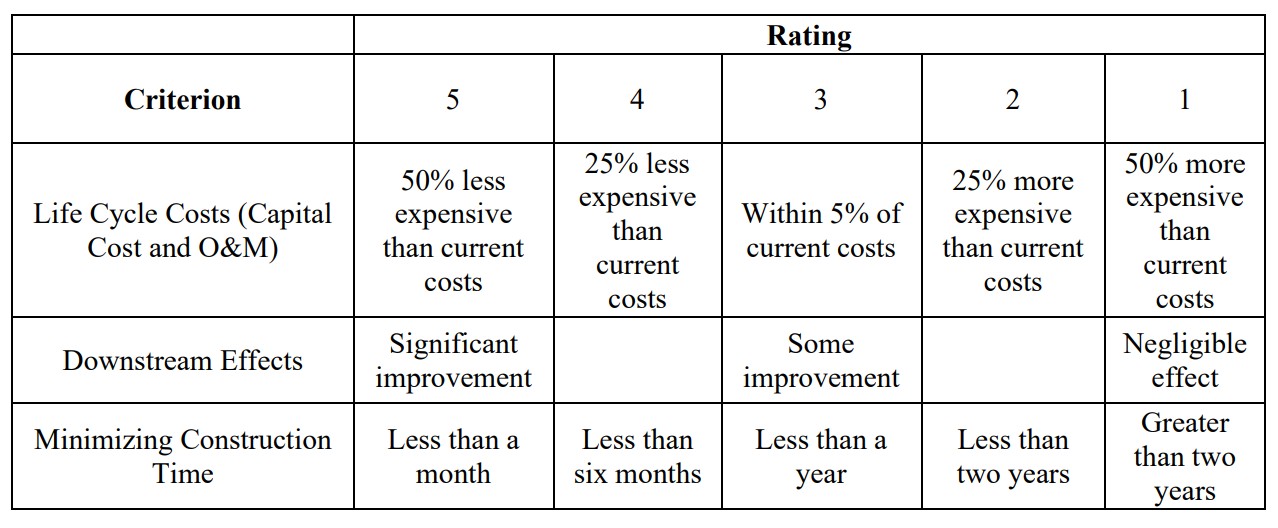Image by: Andrew Shipley
The purpose of primary treatment is to remove biological oxygen demand (BOD) and total suspended solids (TSS), decreasing the initial size of solids.
There is currently no existing primary treatment on-site and all BOD is removed during the secondary treatment processes.
Two alternatives were analyzed: no change to the existing primary treatment, and the addition of a primary clarifier. A primary clarifier has a capital cost estimated above $1.5M. The addition of a primary clarifier will decrease the BOD by up to 20%. It was determined, in further analysis of secondary treatment, that the secondary treatment process is nitrification and denitrification controlled. This means that the BOD is the limiting carbon substrate and is currently below the necessary amount for complete denitrification in secondary treatment.
Each alternative was scored 1-5 (1 being the worst and 5 being the best) based on how well they met each criterion. A summary of how each criteria was scored can be found in the following table.

The decision matrix was compiled of three criterion: life cycle costs, downstream effects, and minimization of construction time. The life cycle costs are a combination of the capital cost and operation and maintenance costs (o&m). Downstream effects are the impacts of the water quality downstream of primary treatment and it had the highest weight because of the impacts that these changes will have to the entire treatment process.

No change to the current treatment process is recommended. The addition of a primary clarifier would be detrimental to the downstream secondary treatment by limiting the carbon substrate.
